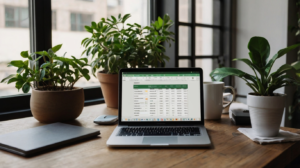Understanding the Balance Sheet
A balance sheet is a financial statement that provides a snapshot of a company’s financial position at a specific point in time. It details the company’s assets, liabilities, and shareholders’ equity. In the Indian context, it’s crucial for investors, analysts, and stakeholders to understand how to interpret these figures to make informed decisions.
Key Components of a Balance Sheet
- Assets: These are resources owned by the company that are expected to bring future economic benefits. Assets are classified as either current (short-term) or non-current (long-term).
- Liabilities: These are obligations that the company needs to settle in the future. Like assets, they are divided into current (short-term) and non-current (long-term) liabilities.
- Shareholders’ Equity: Also known as net worth or capital, this represents the amount that the shareholders invest in the company.
Analyzing a Balance Sheet: A Step-by-Step Approach
- Examine the Asset Structure:
- Current Assets: These typically include cash, inventories, receivables, and short-term investments. In an Indian company, look for high receivables as they might indicate credit sales.
- Non-Current Assets: These are long-term investments like property, plant, and equipment (PP&E), intangible assets, and long-term investments.
- Assess the Liability Structure:
- Current Liabilities: These include short-term borrowings, trade payables, and other short-term obligations. A high level of current liabilities compared to current assets can be a red flag.
- Non-Current Liabilities: Long-term debts, deferred tax liabilities, and long-term provisions fall under this category.
- Evaluate Shareholders’ Equity: This section includes share capital, reserves and surplus, and retained earnings. It reflects the company’s capacity to fund its operations internally.
- Key Ratios to Consider:
- Debt-to-Equity Ratio: Gives an insight into the company’s financial leverage and risk.
- Current Ratio: Measures liquidity and the company’s ability to pay off its short-term obligations.
Live Example: Analyzing a Real Indian Company’s Balance Sheet
Let’s take a hypothetical example of an Indian company, “TechIndia Pvt. Ltd.”:
Balance Sheet as of 31st March 2024 (All figures in INR Crores)
- Assets:
- Current Assets: Cash (50), Receivables (150), Inventories (100)
- Non-Current Assets: PP&E (500), Intangible Assets (100)
- Liabilities:
- Current Liabilities: Short-term borrowings (120), Trade Payables (80)
- Non-Current Liabilities: Long-term borrowings (300)
- Shareholders’ Equity: Share Capital (200), Reserves and Surplus (100)
Analysis:
- The company has a higher proportion of non-current assets, indicating significant long-term investments.
- Current liabilities exceed current assets, suggesting potential liquidity issues.
- The debt-to-equity ratio is 1.4 (420/300), indicating a moderate level of debt.
Conclusion
Reading and analyzing a balance sheet is vital for understanding the financial health of a company. In the Indian context, where businesses often operate in a dynamic and sometimes volatile environment, this skill becomes even more crucial. By breaking down the balance sheet into assets, liabilities, and shareholders’ equity and applying key financial ratios, investors and stakeholders can gain deep insights into a company’s financial standing.














